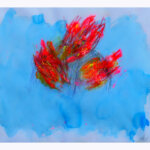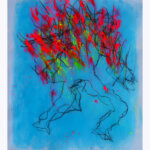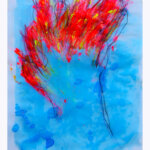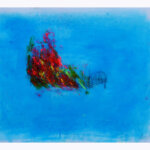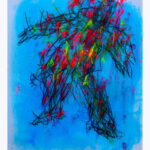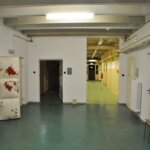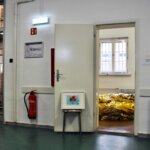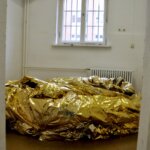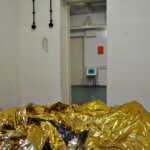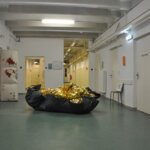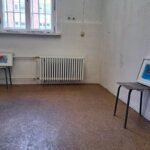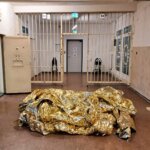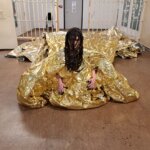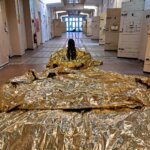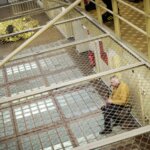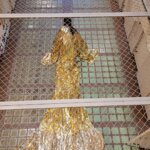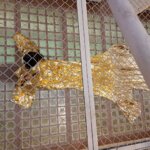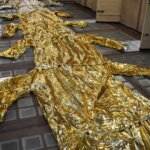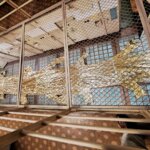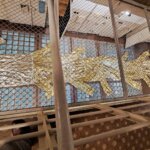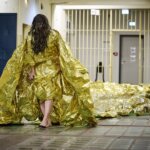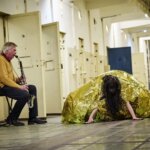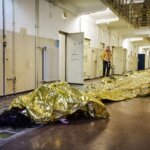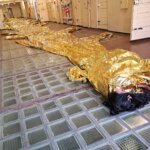35th annual exhibition Künstlerbund Mecklenburg-Vorpommern in the Documentation and Dokumentations- und Gedenkstätte in der ehemaligen Untersuchungshaft der Staatssicherheit Rostock (DuG Rostock) and Kunsthalle Rostock / Curator: Tereza de Arruda
THE RIVER 2025 / a hundrich project in 3 chapter – performance: Lydia Klammer / music: Theo Jörgensmann
THE RIVER / chapter 3 – the performance: https://youtu.be/D2OtQJAhtus
The Democratic Value of Art: A Deeply Personal Exploration of Destruction, Resistance, and Humanity
For me, art is not an escape from reality, but a way to comprehend it in all its contradictions – in its brutality and its potential. This exhibition is my artistic attempt to bring destruction, resistance, and humanity into focus and to ask the question: How can art, as a democratic value, strengthen our understanding of freedom and connection?
What remains of humanity when destruction rages? How can we, as a society, overcome the forces of destruction that continuously seek to divide us?
Chapter 1: They – A Mosaic of Destruction
When I created the pieces for this chapter, I felt like a chronicler of violence. Each image depicts scenes that became symbols of destruction for me: a burning house, a helping hand that is itself destroyed, a burning bed capturing the loss of comfort and safety. These scenes resemble a mosaic – pieced together from fragments of violence and pain, yet telling a larger story: of destructive forces that come from different directions, often appearing unrelated, but ultimately sharing a common goal – the destruction of humanity and democracy.
The small format of these images is deliberately chosen. It compels viewers to come closer, to look more closely
Chapter 2: The Circle – A Space for Unity and Reflection
This chapter serves as a kind of counterpoint. The circle made of rescue blankets symbolizes, for me, the unity that can connect us as human beings – and at the same time, the fragility of that unity.
Rescue blankets are a universal symbol of help and protection, but they also remind us of the vulnerability of life. Their golden shimmer evokes hope and draws attention to a central question: What holds us together as human beings?
For me, the circle represents something infinite, reflecting the cycle of life, death, and rebirth in nature. At the same time, it shows how fragile our human connectedness is – and how vital it is to protect it.
the transformation 2nd to 3rd chapter
Chapter 3: The River – My Personal Journey Through Pain and Hope / Performance: Lydia Klammer, Music: Theo Jörgensmann
This chapter moves me most deeply because it was born from a place that confronted me inescapably with the past. Initially, it was envisioned as a “river” made of rescue blankets – a metaphor for the cycle of humanity. But as I entered the memorial site of the former Stasi detention center in Rostock, the river transformed into something else: a “Via Dolorosa” – a path of suffering.
The river begins in silence. The performer, draped in rescue blankets, moves slowly, almost hesitantly. The rustling of the blankets, her breathing, and eventually the music fill the space with a palpable intensity. The circle opens, and the river flows into the corridor – the rescue blankets, once a symbol of aid, become a symbol of suffering – and of hope.
The river becomes a tribute to all who have suffered injustice – then and now. In the end, the river of rescue blankets remains, a silent witness to both past and present. At the same time, “the river” is, for me, also a symbol of hope: humanity can be destroyed, but it will always be reborn.
the performance is on February 21, 2025 / 5 p.m. Dokumentations- und Gedenkstätte ehemalige Stasi-Untersuchungshaftanstalt Rostock, Grüner Weg 5, 18055 Rostock.
Why This Exhibition Is So Personal
I cannot speak about these works without sharing my own sense of involvement. Many of the images and scenes in this exhibition are born from my personal experiences. They are shaped by places I have visited, stories I have heard, and moments that have deeply moved me.
At times, while working on this exhibition, I felt overwhelmed. I thought about all the people who, throughout history and even today, are oppressed. Those whose freedom is taken away. Those who have no voice.
This exhibition is my answer to the question of how we can confront destruction and division. In a time when authoritarian structures are growing louder and humanity is repeatedly called into question, I do not want to remain silent. For me, art is also resistance. It gives us a voice when words so often fail.
Pampin, Januar 2025 / Hundrich
Fotos/ 3rd chapter, THE RIVER: Thomas Häntzschel, 4/10/11/12
